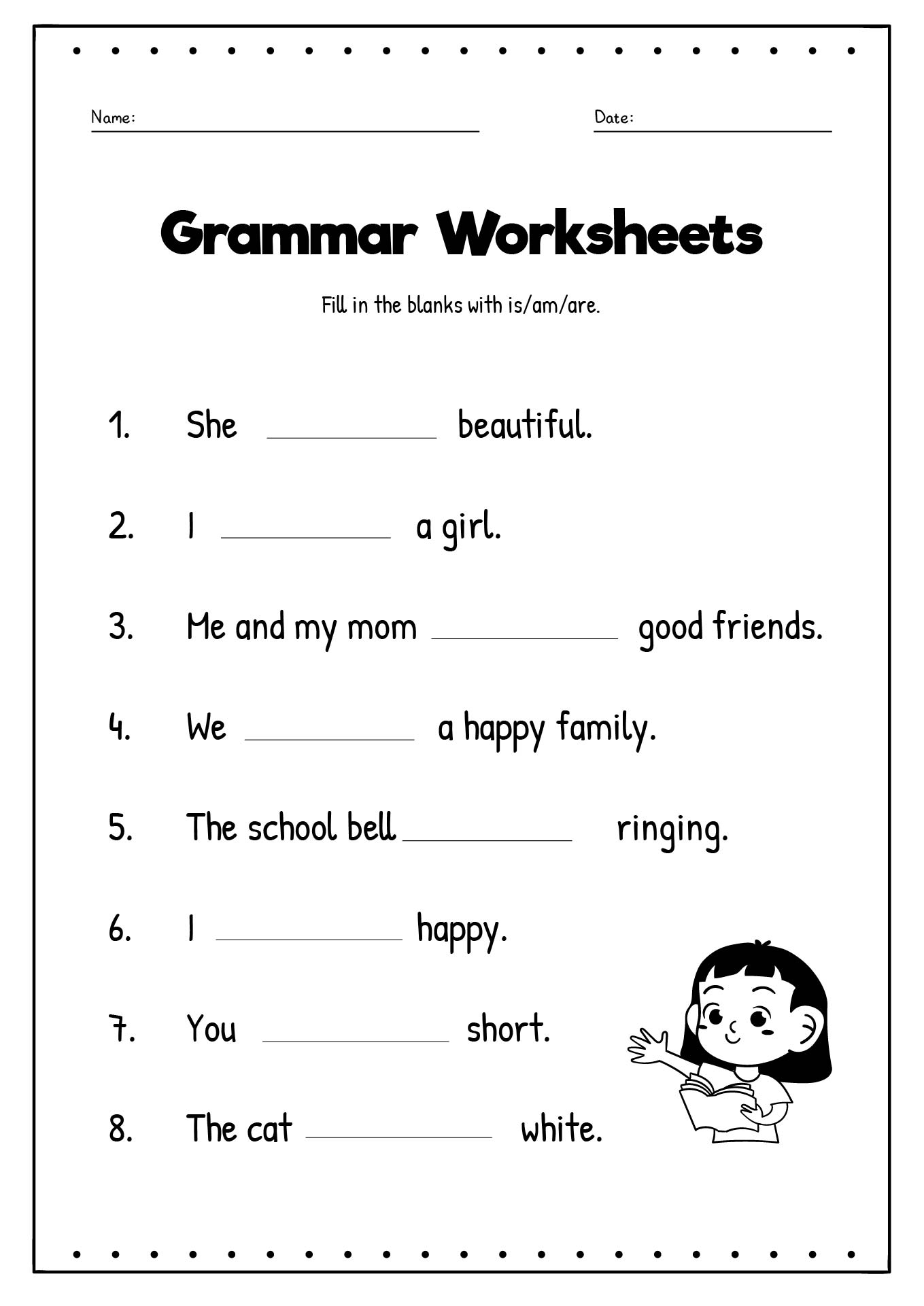
The Unsung Heroes of Language Learning: Mastering English Grammar with Worksheets
In the intricate tapestry of language acquisition, grammar stands as the foundational warp and weft, providing the structure and coherence that allows meaning to truly take shape. Without a solid grasp of grammar, even the most expansive vocabulary can fall flat, leading to misunderstandings and a lack of clarity. While many avenues exist for grammar instruction – from textbooks and online courses to immersive conversation – one of the most enduring, effective, and versatile tools in a learner’s arsenal is the humble English grammar worksheet. These structured exercises, often underestimated, are the unsung heroes that transform abstract grammatical rules into concrete, applicable knowledge, fostering confidence and precision in language use.
This article delves into the profound utility of English grammar worksheets, exploring their diverse forms, myriad benefits, and best practices for their integration into a holistic language learning journey. We will uncover why these seemingly simple pages of exercises are indispensable for learners of all levels, from beginners grappling with basic sentence structures to advanced speakers refining their command of nuance and complexity.
The Indispensable Role of Grammar in Communication

Before diving into the specifics of worksheets, it’s crucial to acknowledge why grammar holds such a pivotal position. Grammar dictates how words combine to form phrases, clauses, and sentences. It governs tense, agreement, punctuation, and word order – all elements critical for conveying precise meaning. A misplaced comma can change the entire intent of a sentence, and incorrect verb tense can obscure when an action occurred.

For non-native speakers, mastering English grammar is particularly challenging due to its irregularities, phrasal verbs, and often counter-intuitive rules. For native speakers, while intuitive, a conscious understanding of grammar refines writing skills, improves formal communication, and strengthens critical thinking. In both cases, systematic practice is key to internalizing these rules, and this is precisely where English grammar worksheets shine.
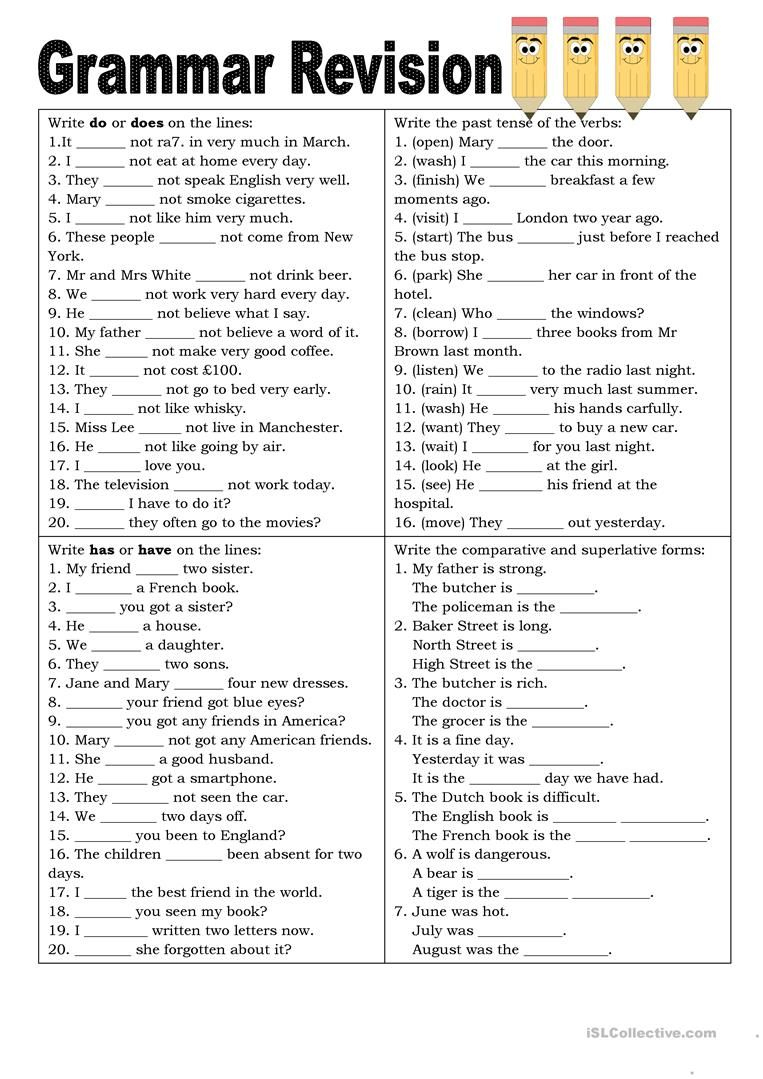
What Exactly Are English Grammar Worksheets?

At their core, English grammar worksheets are structured exercises designed to provide targeted practice on specific grammatical concepts. They bridge the gap between theoretical knowledge (learning a rule) and practical application (using the rule correctly). While their formats can vary widely, common types include:

- Fill-in-the-Blanks: Learners complete sentences by inserting the correct form of a verb, a suitable preposition, or an appropriate article.
- Multiple Choice: Students select the best grammatical option from a given set, often testing understanding of nuances or exceptions.
- Sentence Correction/Error Identification: Learners identify and correct grammatical errors within sentences, sharpening their analytical skills.
- Matching Exercises: Pairing grammar terms with their definitions, or parts of sentences to form grammatically correct constructions.
- Sentence Reordering: Unscrambling words or phrases to form coherent and grammatically sound sentences.
- Cloze Tests: Filling in missing words in a passage, often testing vocabulary, grammar, and contextual understanding simultaneously.
- Transformation Exercises: Changing sentence structures (e.g., active to passive voice, direct to reported speech).
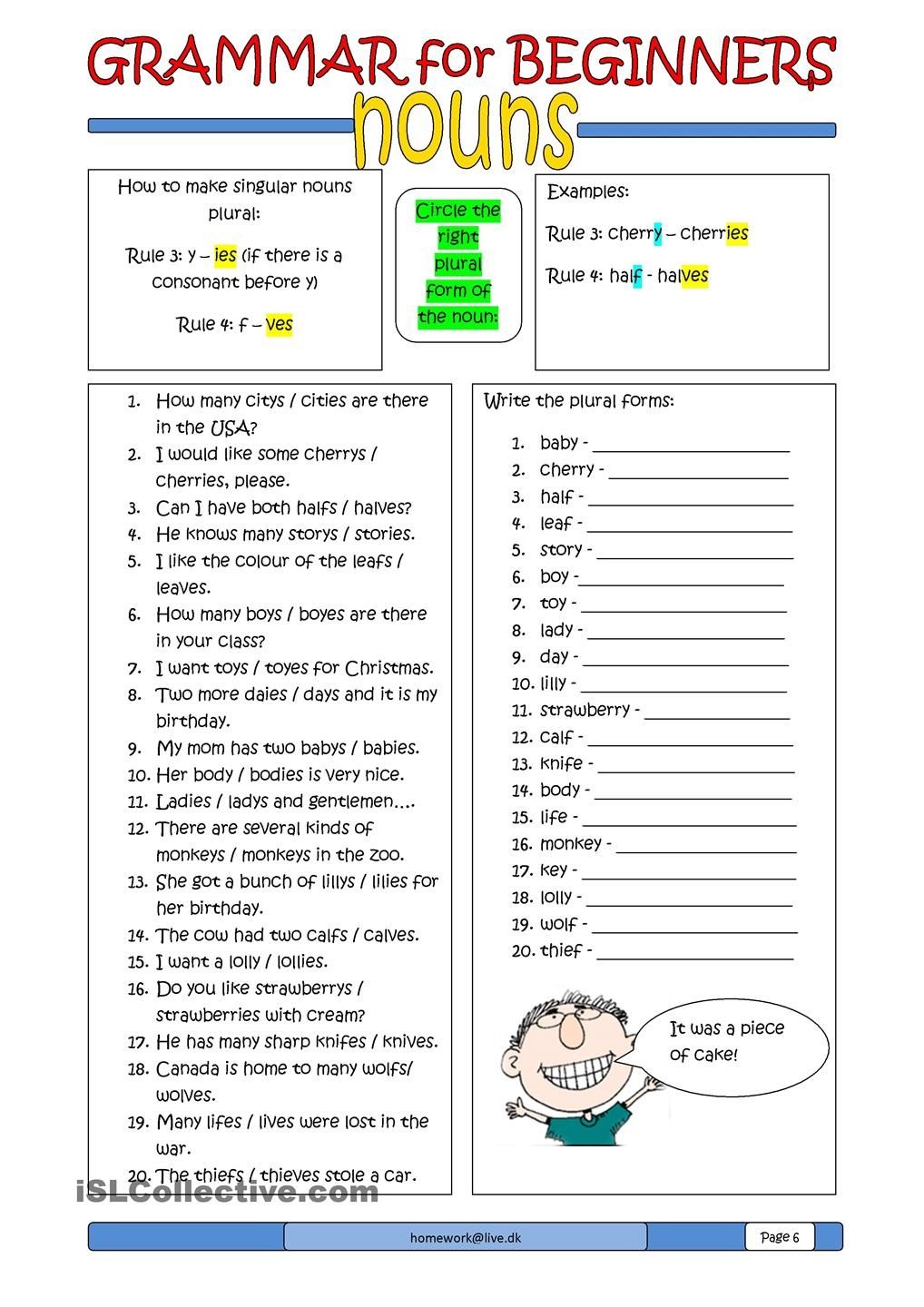
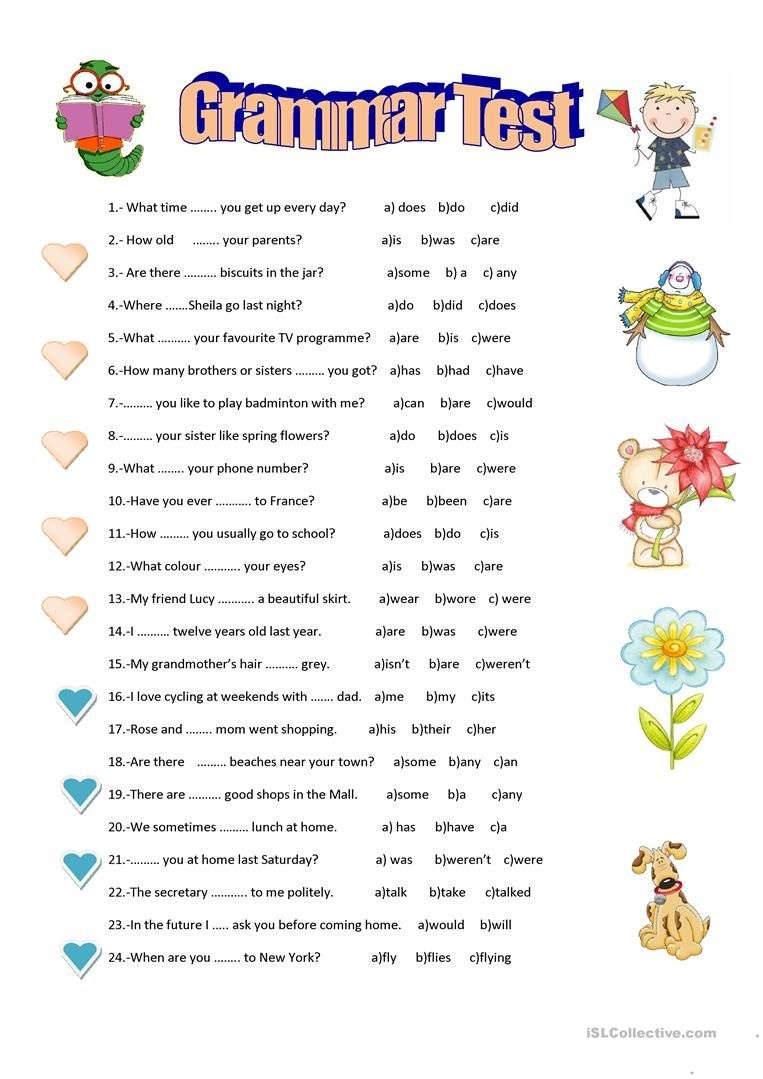
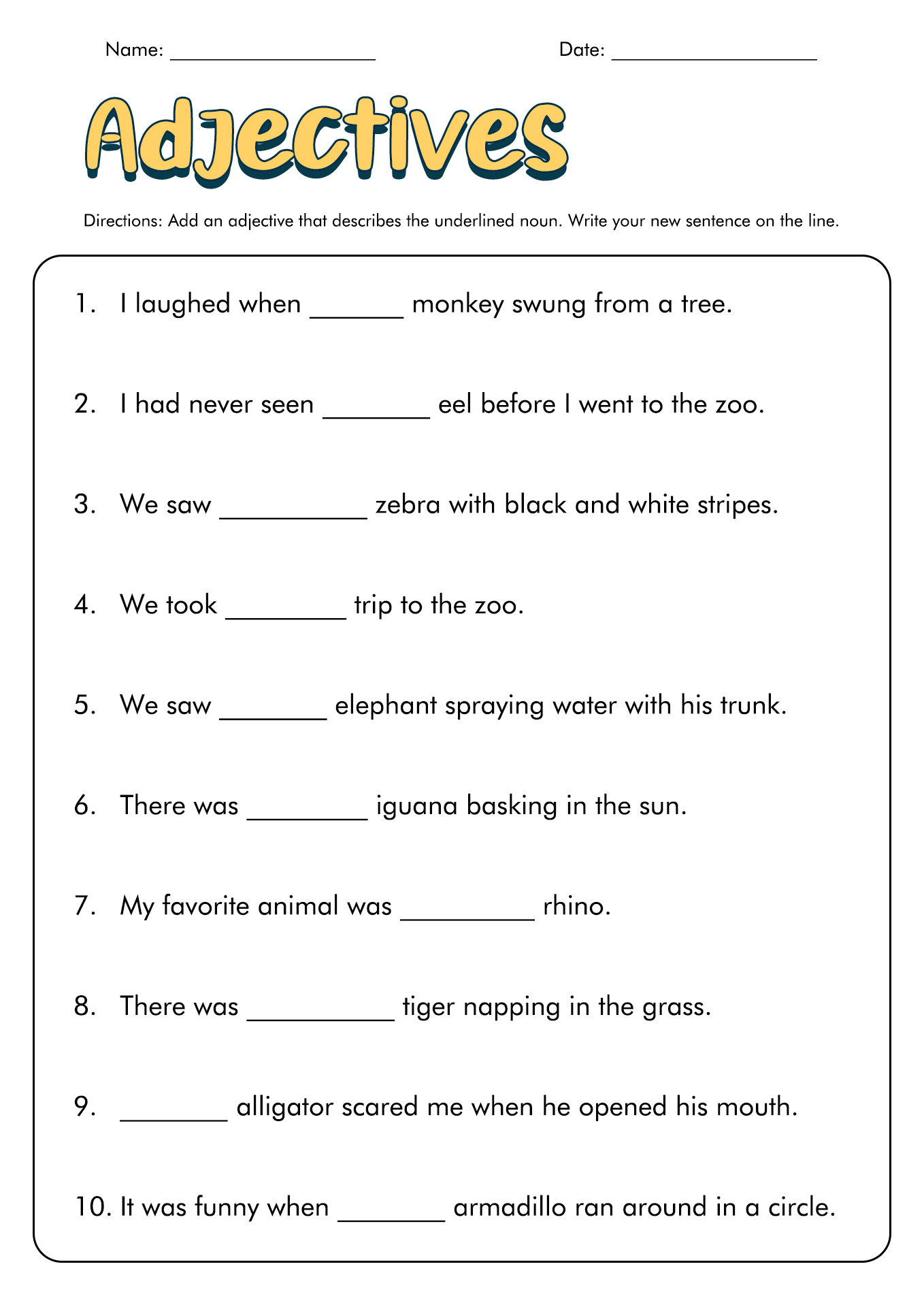
These exercises can be simple or complex, focusing on a single grammar point (like "present perfect tense") or integrating multiple concepts (like "conditional sentences with mixed tenses"). They are available in various formats, from traditional printouts to interactive digital versions, catering to diverse learning preferences.
The Multifaceted Benefits of Using English Grammar Worksheets

The value of English grammar worksheets extends far beyond mere rote memorization. Their structured nature offers a wealth of benefits that contribute significantly to a learner’s linguistic development:
-
Reinforcement and Retention: Learning a grammar rule once is rarely enough for true mastery. Worksheets provide the repetition necessary to solidify understanding and move knowledge from short-term to long-term memory. Each completed exercise reinforces the rule, making it more intuitive and readily accessible during communication.
-
Identification of Weaknesses: As learners work through exercises, they inevitably encounter areas where they struggle. This immediate feedback helps pinpoint specific grammatical concepts that require more attention. A consistent error in subject-verb agreement, for example, signals a need for focused review in that particular area, allowing for targeted remediation.
-
Building Confidence: Successfully completing a series of exercises, especially with an answer key for verification, provides a tangible sense of accomplishment. This positive reinforcement builds confidence, encouraging learners to tackle more complex grammar points and to apply their knowledge more boldly in real-world communication.
-
Structured and Systematic Practice: Worksheets offer a clear, step-by-step approach to learning. They break down complex grammar into manageable chunks, allowing learners to focus on one concept at a time before integrating it with others. This systematic progression is crucial for avoiding overwhelm and ensuring a solid foundation.
-
Independent Learning and Self-Paced Study: One of the greatest strengths of worksheets is their suitability for independent study. Learners can work through them at their own pace, revisiting difficult sections as many times as needed without the pressure of a classroom setting. This autonomy empowers learners to take ownership of their education.
-
Supplementary Learning: Worksheets serve as an excellent complement to classroom lessons, textbooks, and online courses. They provide the necessary "homework" or "practice ground" to apply what has been taught, solidifying theoretical knowledge through practical application.
-
Test Preparation: For students preparing for standardized tests (like TOEFL, IELTS, SAT, or Cambridge English Exams), worksheets are invaluable. They familiarize learners with common question formats related to grammar, helping to reduce test anxiety and improve performance.
-
Development of Analytical Skills: Correcting sentences or identifying errors requires learners to dissect language, understand the relationships between words, and apply rules logically. This process hones critical thinking and analytical abilities, which are transferable skills beyond language learning.
Types of English Grammar Worksheets and Their Applications
The scope of English grammar worksheets is vast, covering virtually every aspect of the English language. They are typically categorized by the specific grammar point they target and often by proficiency level:
For Beginners (A1-A2):
- Parts of Speech: Identifying nouns, verbs, adjectives, adverbs.
- Simple Present Tense: Forming positive, negative, and interrogative sentences.
- Be Verb: Conjugation and usage (am, is, are).
- Basic Pronouns: Subject and object pronouns (I/me, he/him).
- Simple Prepositions of Place and Time: (in, on, at).
- Basic Articles: (a, an, the).
For Intermediate Learners (B1-B2):
- All Tenses: Practicing past simple, present perfect, future simple, continuous forms.
- Modals: Usage of can, could, may, might, must, should, will.
- Conditionals: Zero, first, second, and third conditionals.
- Passive Voice: Transforming active sentences into passive.
- Reported Speech: Changing direct speech to indirect.
- Comparatives and Superlatives: Forming and using them correctly.
- Relative Clauses: Using who, which, that, where, when.
- Phrasal Verbs: Understanding common multi-word verbs.
For Advanced Learners (C1-C2):
- Mixed Conditionals: Complex conditional structures.
- Inversion: Using inverted word order for emphasis.
- Subjunctive Mood: Expressing wishes, recommendations, or hypothetical situations.
- Advanced Article Usage: Nuances of ‘the’ and zero article.
- Complex Sentence Structures: Combining clauses using various conjunctions and punctuation.
- Discourse Markers: Using transition words and phrases effectively.
- Punctuation Nuances: Mastering commas, semicolons, colons, and dashes.
- Figurative Language Grammar: Understanding the grammatical implications of metaphors, similes, etc.
Each of these categories benefits immensely from targeted worksheet practice, ensuring that learners systematically build their grammatical framework from the ground up, or refine the intricate details at higher levels.
Best Practices for Utilizing English Grammar Worksheets Effectively
To maximize the benefits of English grammar worksheets, it’s important to adopt a strategic approach:
- Understand Before You Practice: Don’t just dive into exercises. Ensure you understand the grammar rule thoroughly first, whether from a textbook, a lesson, or an online explanation. Worksheets reinforce, they don’t primarily teach new concepts from scratch.
- Vary the Types: Mix up the worksheet formats. If you’ve been doing a lot of multiple-choice, switch to sentence correction or transformations. This keeps learning engaging and challenges different cognitive skills.
- Use Answer Keys Wisely: Don’t just copy answers. Attempt the worksheet first, then check your answers. Analyze your mistakes to understand why you got something wrong. This error analysis is where significant learning happens.
- Don’t Be Afraid to Make Mistakes: Errors are part of the learning process. View them as opportunities to learn and grow, not as failures.
- Integrate with Other Skills: After completing a worksheet on, say, the present perfect, try to use that tense deliberately in your next conversation, piece of writing, or even while thinking in English. Grammar isn’t just about correct sentences on paper; it’s about fluent communication.
- Consistency is Key: Short, regular practice sessions are far more effective than sporadic, lengthy ones. Dedicate a small amount of time each day or a few times a week to grammar practice.
- Seek Quality Resources: Not all worksheets are created equal. Look for resources from reputable publishers, educational websites, or experienced teachers. Quality worksheets are clear, well-structured, and provide relevant examples.
- Consider Digital vs. Print: While traditional print worksheets offer the tactile experience of writing, digital versions often provide instant feedback, gamification, and adaptive learning features. Use what works best for your learning style.
Beyond the Worksheet: A Holistic Approach
While English grammar worksheets are powerful tools, they are just one component of a comprehensive language learning strategy. To achieve true fluency and proficiency, it’s essential to integrate grammar practice with other language skills:
- Reading: Pay attention to how grammar is used by native speakers in books, articles, and online content.
- Listening: Notice grammatical structures in podcasts, movies, and conversations.
- Speaking: Consciously apply grammatical rules in your daily interactions. Don’t be afraid to make mistakes; correct them as you go.
- Writing: This is where grammar truly comes alive. Practice writing emails, essays, stories, and journal entries, focusing on applying the rules you’ve learned. Seek feedback on your written work.
By combining the structured practice offered by worksheets with real-world exposure and application, learners can move beyond simply knowing grammar rules to instinctively using them correctly and effectively.
Conclusion
The journey to mastering English grammar can seem daunting, but with the right tools and approach, it becomes an achievable and rewarding endeavor. English grammar worksheets, with their diverse formats and targeted exercises, serve as an indispensable resource for learners at every stage. They provide the necessary repetition for retention, highlight areas for improvement, build confidence through structured success, and offer a flexible pathway for independent study.
Far from being mundane, these worksheets are dynamic instruments that empower learners to solidify their understanding, refine their skills, and ultimately communicate with greater clarity, precision, and confidence. Embrace the power of the English grammar worksheet, and unlock a clearer, more articulate expression of your thoughts and ideas in the universal language of English.
